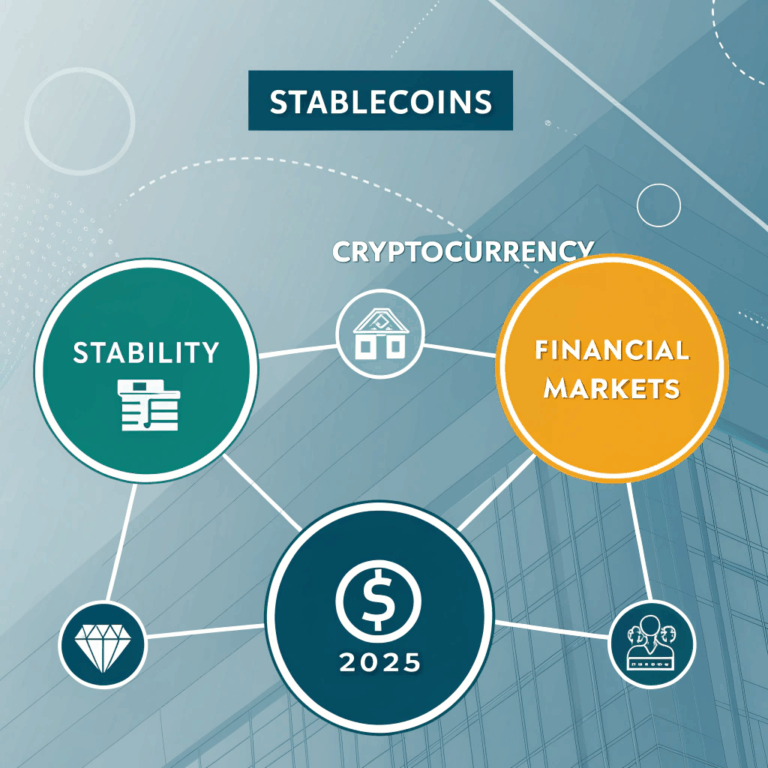What Are Wrapped Tokens in Crypto? A Beginner’s Guide (2025)

Introduction
Have you seen tokens like WBTC, WETH, or wSOL and wondered what the “W” stands for? In crypto, that “W” means wrapped — and in 2025, wrapped tokens are essential for cross-chain functionality, DeFi access, and liquidity movement. This guide explains everything simply.
What Is a Wrapped Token?
A wrapped token is a tokenized version of another cryptocurrency, designed to work on a blockchain it wasn’t originally built for.
Example:
- Bitcoin (BTC) exists on its own blockchain
- Wrapped Bitcoin (WBTC) is an ERC-20 token on Ethereum, representing BTC at a 1:1 ratio
Wrapped tokens allow BTC to be used in Ethereum DeFi apps, even though BTC itself doesn’t support smart contracts.
Why Wrapped Tokens Exist
Blockchains are not natively compatible. You can’t use BTC directly on Ethereum or SOL on BNB Chain.
Wrapped tokens solve this by:
- Making assets interoperable across chains
- Bringing liquidity to DeFi platforms
- Allowing users to earn yield or trade with native assets elsewhere
They act as bridges between ecosystems.
How Wrapped Tokens Work
- A user locks the original token (e.g., BTC) with a custodian or smart contract
- A wrapped version (e.g., WBTC) is minted on another blockchain
- The wrapped token can be used like any ERC-20 or BEP-20 token
- When unwrapped, the original token is released and the wrapped one is burned
Some systems use centralized custodians (e.g., BitGo for WBTC), others are decentralized via smart contracts.
Common Examples of Wrapped Tokens
| Wrapped Token | Represents | Blockchain Hosted On | Use Case |
|---|---|---|---|
| WBTC | Bitcoin (BTC) | Ethereum | Use BTC in DeFi protocols |
| WETH | Ethereum (ETH) | Ethereum (ERC-20 form) | Used in DeFi and token standards |
| wSOL | Solana (SOL) | Ethereum, BNB Chain | Trade SOL on EVM chains |
| wBNB | BNB (native coin) | Ethereum, Avalanche | Cross-chain BNB usage |
| renBTC | Bitcoin (BTC) | Multichain | Decentralized wrapped BTC |
Wrapped Tokens vs Regular Tokens
| Feature | Wrapped Token | Native Token |
|---|---|---|
| Chain Compatibility | Cross-chain | Native to one blockchain |
| Use in DeFi | Broad (on target chain) | Limited to home chain |
| Backed By | Underlying asset (1:1) | Blockchain protocol |
| Requires Custodian? | Yes (in many cases) | No |
Benefits of Wrapped Tokens
✅ Cross-chain liquidity
✅ Access DeFi protocols on other chains
✅ Increased utility for non-EVM assets
✅ Enable yield farming, trading, lending
✅ Efficient capital use (e.g., using BTC in Ethereum lending)
Wrapped tokens are essential to multichain DeFi.
Risks and Limitations
⚠️ Centralization risk – Some rely on custodians
⚠️ Smart contract risk – Wrapping involves complex contracts
⚠️ Depeg risk – Wrapped token may trade slightly off peg
⚠️ Low adoption – Not all platforms support every wrapped version
⚠️ Liquidity fragmentation – Too many versions of the same asset
Always check which wrapped version is supported before using it.
Use Cases in DeFi and Cross-Chain
- Use BTC in Ethereum DeFi (WBTC on Aave, Curve)
- Trade wrapped assets on DEXes (WETH on Uniswap)
- Bridge tokens between chains via wrapping (e.g., wETH → Arbitrum)
- Provide liquidity or collateral in lending/farming platforms
- NFTs and GameFi using wrapped native tokens
Wrapped tokens unlock flexibility and composability in Web3.
How to Wrap and Unwrap Tokens
- Go to a trusted bridge or wrapping protocol (e.g., wbtc.network, [RenBridge], [Portal])
- Connect your wallet
- Select original token and destination chain
- Approve transaction and send
- Receive wrapped token in your wallet
To unwrap: do the same steps in reverse.
Pro tip: Always test with small amounts first.
FAQ
Is WBTC the same as BTC?
No — WBTC is an ERC-20 token backed 1:1 by BTC, but it runs on Ethereum.
Can wrapped tokens lose value?
Slightly, yes — due to low liquidity or depeg, but reputable wrapped tokens usually stay close to parity.
Are wrapped tokens safe?
Generally yes, but it depends on the custodian or wrapping protocol.
Can I use wrapped tokens in DeFi?
Absolutely. That’s one of their primary purposes.
Conclusion
Wrapped tokens are a key part of making crypto interoperable and flexible. In 2025, they’re everywhere — powering trades, loans, and DeFi across multiple chains. Learn how they work, understand their risks, and you’ll unlock the full potential of the multichain world.





